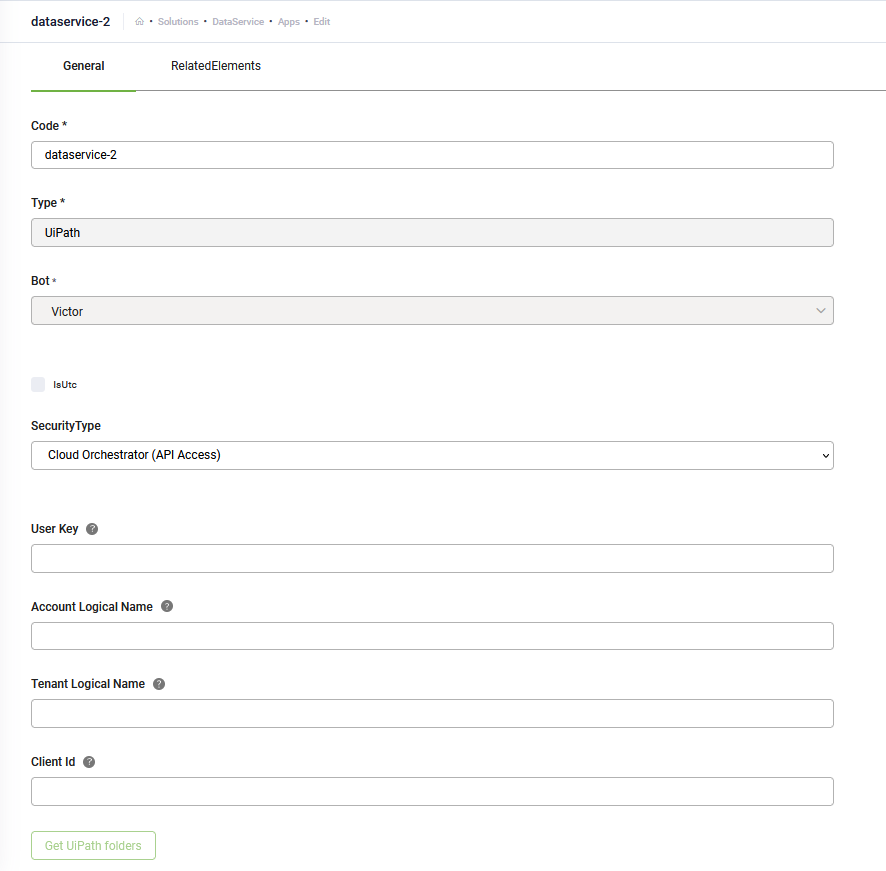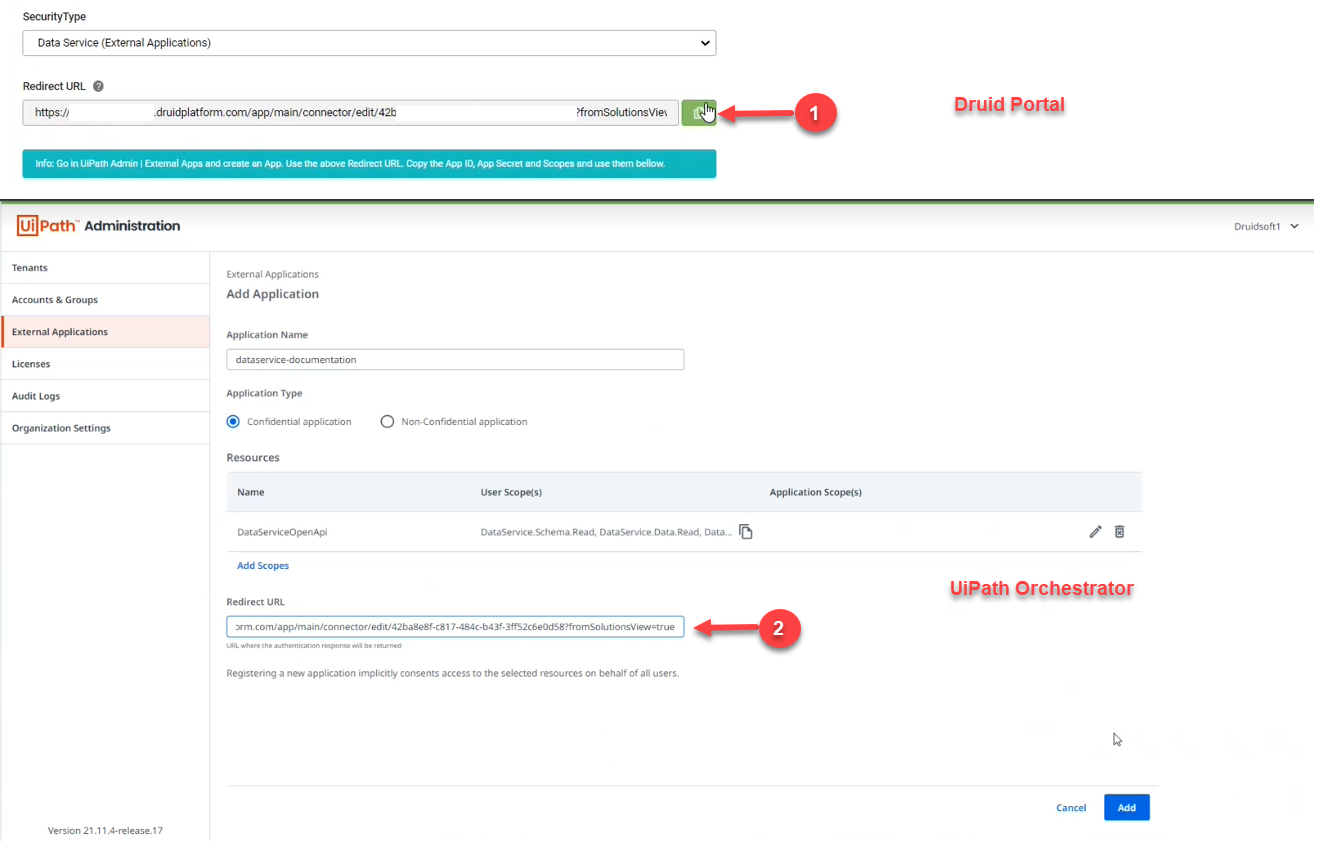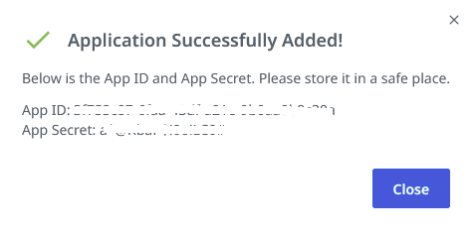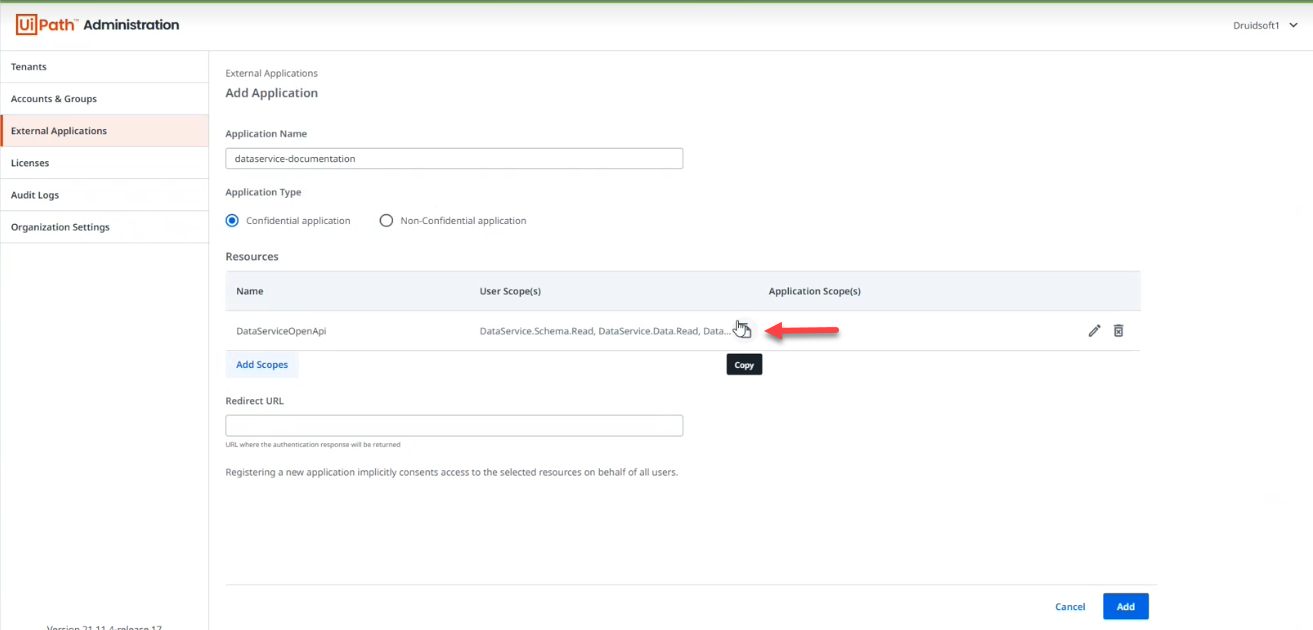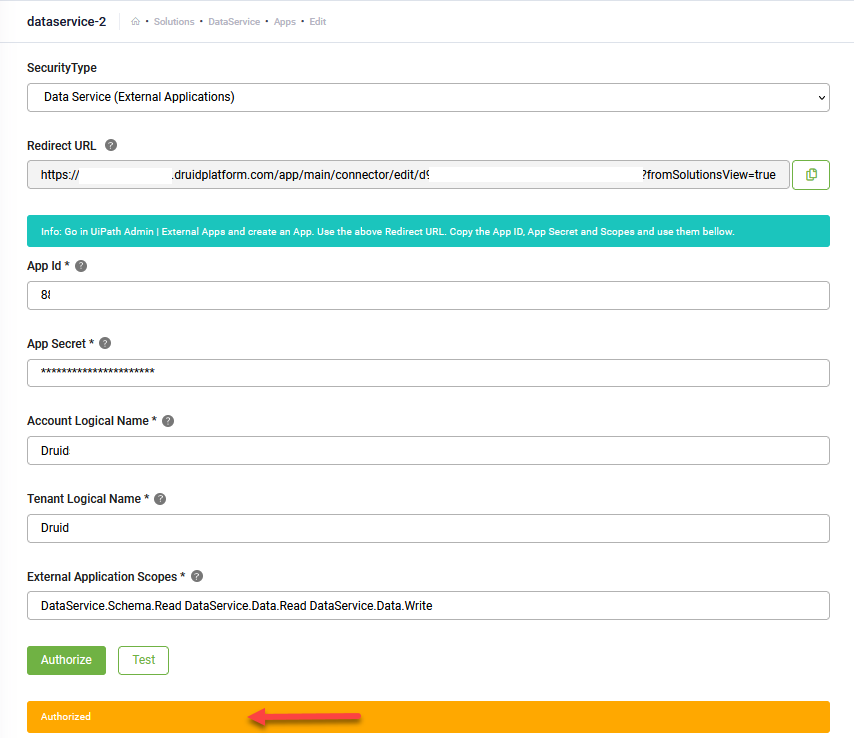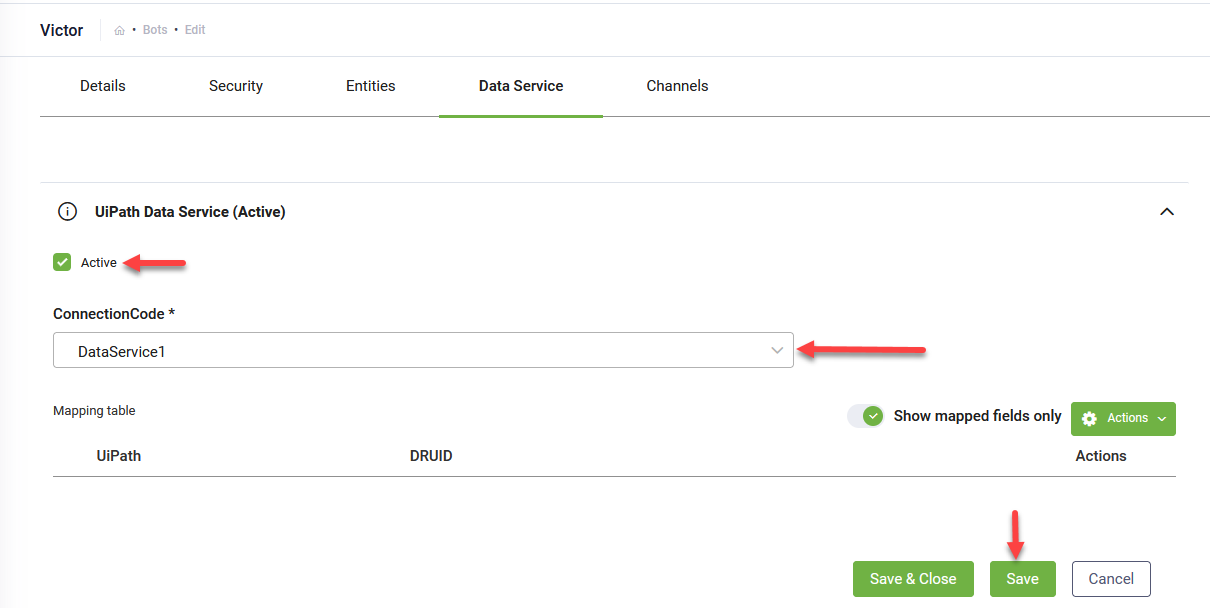UiPath Data Service Connector
UiPath Data Service integration enables bot authors to create Druid chatbot informational model in sync with their data model from the UiPath Data Service.
Step 1. In Druid, create UiPath Data Service connector app
The UiPath connector allows integration with the UiPath Orchestrator, to serve the Druid UiPath Connector Action with the credentials needed to perform the required tasks, in this case to connect to UiPath Data Service. Thus, the UiPath Connector App only stores access credentials to the Orchestrator.
To add an UiPath connector app for the bot within the selected solution, on the left menu click Apps. The Apps page appears listing the connection strings created for the selected solution.
At the top-right corner of the page, click CreateConnector and select UiPath. The Edit Connector page appears.
In the Code field, enter a name for the UiPath connector.
In the Execution Timeout field, enter the maximum number of seconds a request is allowed to execute. By default, the timeout for all connector integrations is 60 seconds. This setting will apply to all connector tasks which use this app.
If you want to encrypt the data on the connector, from the Encryption Type drop-down, select AESCGM.
Encryption Type enables data encryption on the connector using the AES CGM encryption algorithm and allows bot authors to encrypt specific data before sending it to external UiPath Orchestrator or RPA unattended robots, by using the Encrypt Data integration task as first task in the desired connector action.
When you select AES CGM encryption algorithm (the only one currently available), two new options are available:
- Encryption Key – click the Generate button to generate the key, which will be used by the Encrypt Data task to encrypt the data and by the client / 3rd party application to decrypt the data and use it further.
- Secure encryption with salt – adds a random 64-bits salt to the data before encrypting it. If data encryption is used for integration with RPA unattended robots, the RPA robot (UiPath Studio) should contain the Decrypt Text activity from UiPath.Cryptography package, configured to use the AESCGM algorithm, Druid decryption key and the text to be decrypted from a local variable. This option is set to true by default on the UiPAth connector app (because the UiPath.Cryptography package uses this algorithm).
For more information, see Encrypt Data - UiPath Use Cases.
From the SecurityType drop-down, select Data Service (External Applications).
Click the Save button.
Get the Redirect URL automatically generated by Druid by clicking the copy icon, you will need it to create your external application in Orchestrator.
Step 2. In Orchestrator, create an external app for UiPath Data Service
- Click the main menu, click Admin > External Applications.
- Click the Add application button (
 ). The Add Application page appears.
). The Add Application page appears.
- Enter the Application Name and leave selected Confidential application.
- Click the Add Scopes button. The scopes editor appears on the right side.
- From the Resources drop-down, select Data Service API.
- Click the User Scope(s) tab and select all scopes: DataService.Schema.Read, DataService.Data.Read, DataService.Data.Write.
- Click the Save button. The application scopes appear on the external app configuration page.
- In the Redirect URL field, paste the Redirect URL you copied from Druid (the one that was automatically generated after defining the connection strings).
- Click the Add button. The application is successfully added and a pop-up appears providing you with the App ID and App secret. Store them in a safe location; you will need them in Druid.
Step 3. In Druid, define UiPath Data Service connection strings
On the left menu click Apps and select the connector app you created at Step 1.
Set the following parameters:
|
Parameter |
Description |
|---|---|
|
App Id |
The App ID and App Secret of the external application you created in Orchestrator. If you forgot the App Secret, you can generate a new one. |
|
App Secret |
|
|
Tenant Logical Name |
To get the values for these parameters, go to the UiPath Cloud Services Portal (https://cloud.uipath.com/<tenancyName>/portal_/serviceinstances), under Admin > Tenants, click the desired tenant and click the API Access icon corresponding to the Orchestrator service. |
|
Account Logical Name |
|
|
External Application Scopes |
To get the scopes, go to your Orchestrator external application and from the Resources table, click the Copy icon and paste them in Druid: DataService.Schema.Read, DataService.Data.Read, DataService.Data.Write. |
Click the Save button.
Step 4. Authorize connection to UiPath Data Service
In Druid Portal, authorize the connection to the UiPath Data Service by clicking the Authorize button ( ).
).
If you followed the previous steps, the authorization is successful; otherwise, check that you properly set the connection strings.
Step 5. Activate the connection to your UiPath Data Service
In Druid, go to the bot details and click the Data Services tab.
Tick on Active.
From the Connection Code field, select the UiPath connector you created for UiPath Data Service Integration.
Click the Save button.
You can either now, load the UiPath entity schema in Druid and map UiPath entity fields to Druid entity fields or directly create Druid entities.
